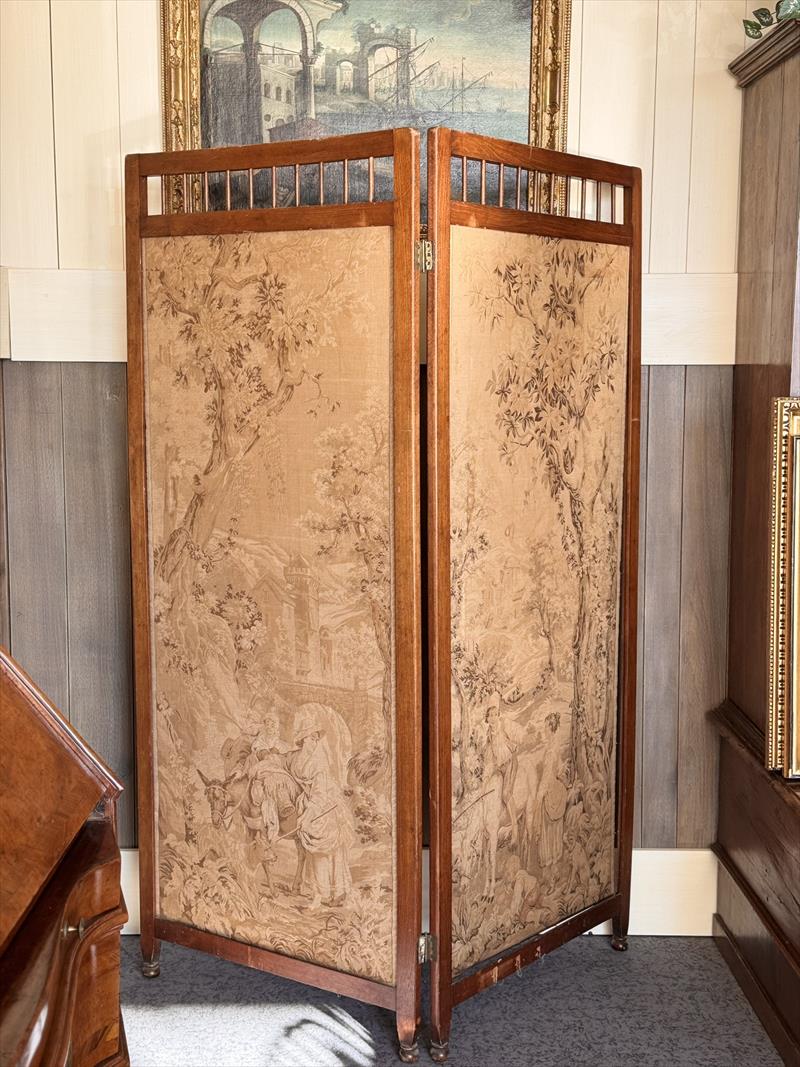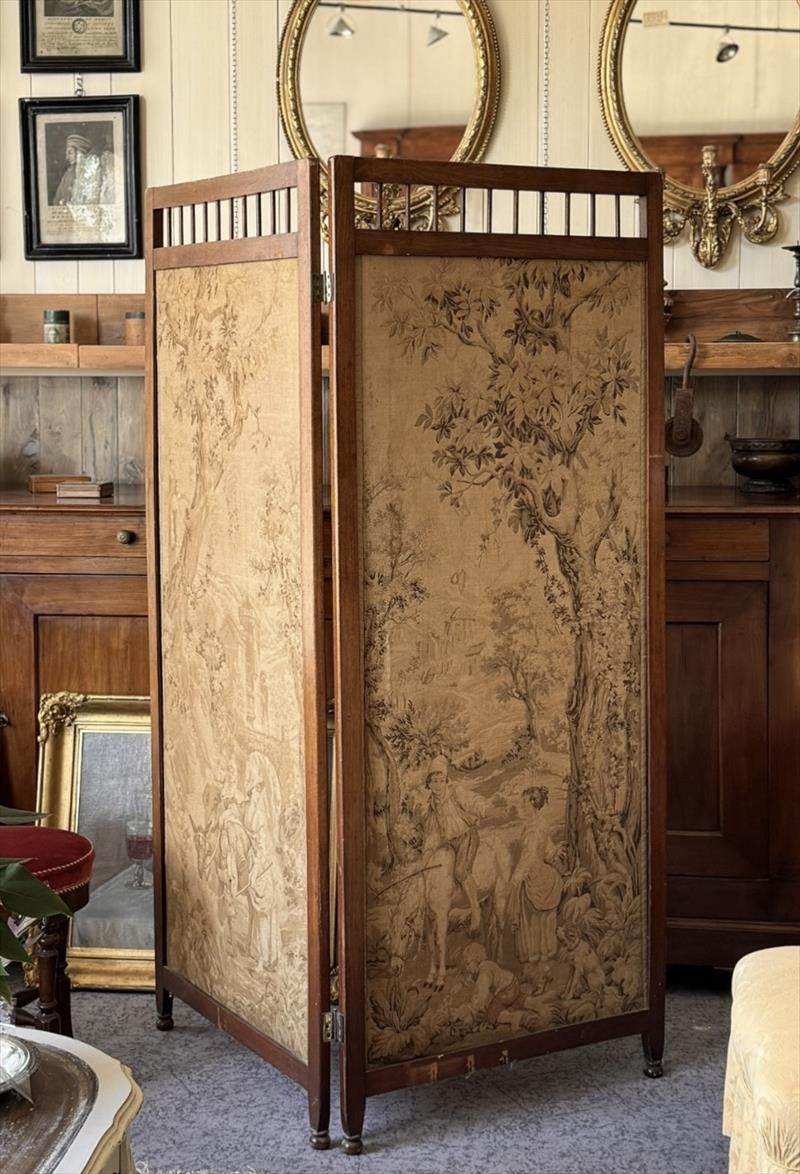Hand-painted screen using plant-based pigments – Tuscany, late 19th century
An interior screen from Tuscany, dating to the late 1800s. It consists of two panels with a solid walnut frame, each featuring hand-painted canvases depicting idealized landscapes with classical ruins, pastoral figures, and centuries-old trees.
The painting technique is known as “succo d’erba” – literally “juice of grass” – an ancient and delicate method using natural pigments extracted from plants such as weld, walnut husks, nettles, spinach, and other dyeing herbs. These were diluted in water or vinegar and applied directly onto raw canvas, without a prepared ground. A fragile process that allowed no corrections and required a steady hand and a refined sense of light.
The result is a decoration in soft, earthy tones – faded greens, browns, and ochres – which, over time, have gained the muted charm of things that don’t impose themselves but quietly endure.
This type of screen was made for private interiors – bedrooms, boudoirs, studies – not to divide space, but to soften it: to shield the dressing area, filter the light, and accompany moments of privacy. Today, it can return to life as a delicate backdrop in a refined setting: beside a bed, behind a desk, or in a dramatic entryway. Even in contemporary interiors, it introduces a silent, poetic note, capable of defining a space without enclosing it.
The piece is intact and unrestored, showing minor signs of age, yet still structurally sound and full of charm.
Its manufacture can be traced to the area between Siena and Florence, where, in the second half of the 19th century – between the end of the Grand Duchy and the early decades of unified Italy – small Tuscan workshops produced decorative furniture in a romantic, understated style, often intended for country villas and bourgeois interiors. In that context, partly under the influence of the Florence Academy of Fine Arts, ancient painting techniques like succo d’erba were rediscovered and brought back into use. Described as early as the 14th century in Cennino Cennini’s Libro dell’Arte, this method was embraced by the most skilled decorators, who knew how to work with an essential palette made of transparency, balance, and lightness.
- Material: Wood and painted canvas
- Size: cm 72/144 x 176 h
- Condition: Restored
- Period: Fine '800
- Style: Neo-Renaissance
- State: Optimal conditions



